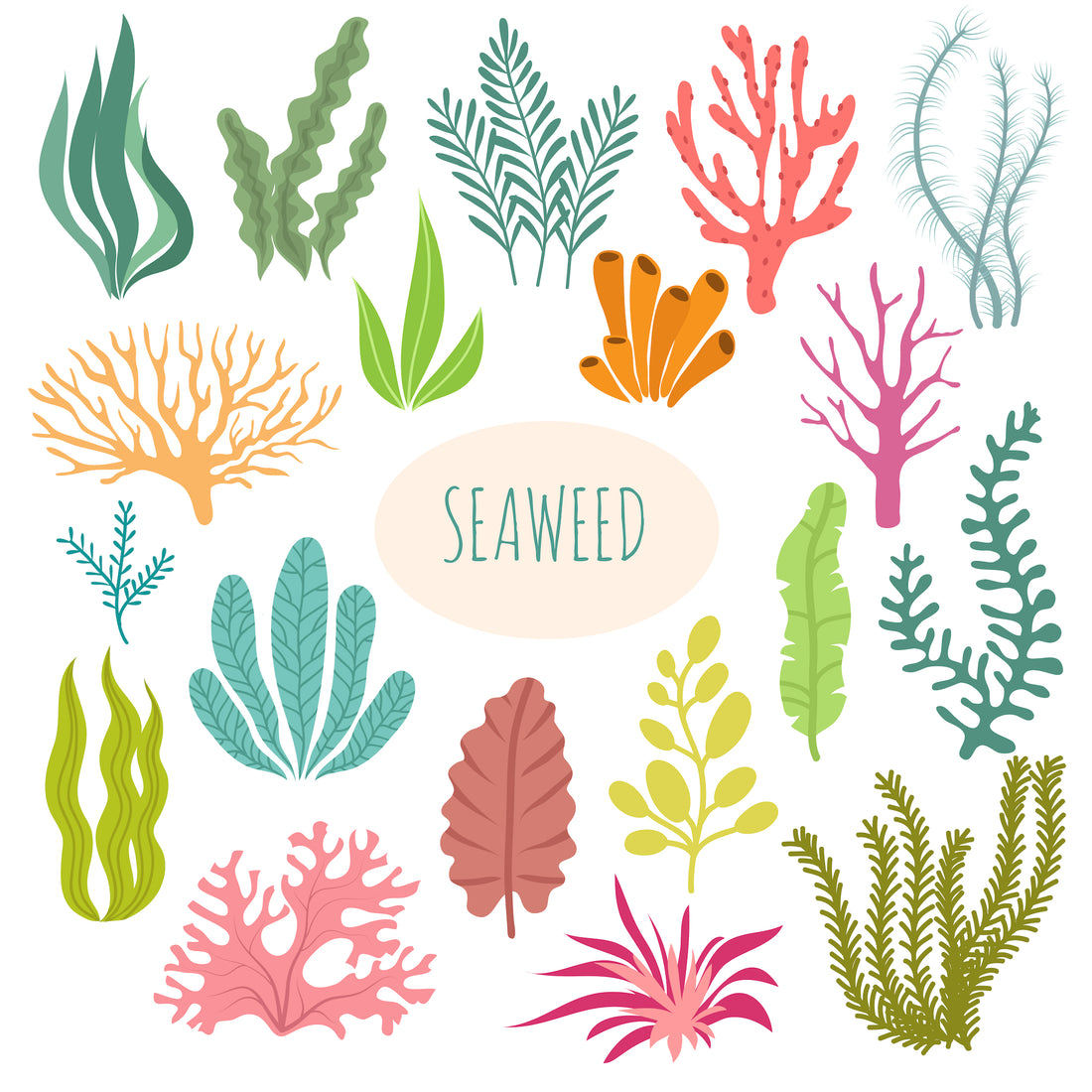Seaweed has now been hailed as a superfood, but there are many different species to get to grips with
Seaweed is considered one of the healthiest ingredients on the market today, and for good reason. This humble marine plant is associated with everything from supporting health thyroid function,[1] to providing key vitamins and minerals like omega-3[2] and vitamin B12.[3]
Because of the growing interest in seaweed, many products – from food items and skincare to smoothies and handwash – now claim to possess all the health benefits that seaweed has to offer. But before you rush out to fill your shopping basket with seaweed goods, it’s important to recognise that not all seaweed is made equal.
‘Seaweed’ is an umbrella term, referring to the more than 12,000 species of oceanic plant life that have been discovered to date, including over 7,000 red algae, 2000+ phaeophytes, 1,500 green species and 1,500 blue-green seaweeds.[4] The nutritional value of seaweed varies dramatically depending on the species, so if you’re looking to incorporate this diverse and exciting plant life into your diet, it’s always a good idea to do your research.
What are the most common kinds of seaweed?
When it comes to edible seaweed, Nori is perhaps the most common option, appearing as thin dried sheets of red seaweed which is usually used to make sushi rolls. Like other seaweed species, Nori is rich in nutrients, vitamins and minerals. However, it can also present unique health risks, such as excess sodium. One full sheet of Nori contains three milligrams of sodium, which may seem insignificant, but many flavoured sheets will be produced with additional sodium, and common sushi accompaniments like soy sauce have high salt levels.[5]
In skincare, algae are quickly becoming popular ingredients for helping to hydrate the skin and retain moisture. Brown algae is used to help brighten the skin, while red algae are used for regeneration.[6]
Algae makes up the vast majority of seaweed species, and receives much of the news focus, but it is far from all that seaweed has to offer.
All seaweed is good, but some is just better

Seaweed benefits go much further than just skin deep. One of the key benefits of seaweed is that it is a natural source of iodine – a key mineral in which many of us are deficient. In fact, recent research from the Iodine Global Network suggests that as many as 50% of infants across Europe could be at risk from iodine deficiency.[7]
As a plentiful, plant-based source of iodine, seaweed is able to support many aspects of our health, including metabolism, thyroid function, cognitive function, skin maintenance, growth in children, and nervous system function. Seaweed also offers a more sustained, gradual iodine release than artificial sources of iodine.[8]
But the nutritional properties of seaweed can change significantly depending on the species, harvest location and processing, so it’s always best to be smart when shopping for seaweed products.
Our products are developed to provide you with the highest quality seaweed
The Organic Hebridean Ascophyllum Seaweed in Doctor Seaweed's Weed & Wonderful® range is sustainably wild harvested from pristine Scottish waters to ensure high quality from sea to store. Nothing is added and nothing is taken away from our seaweed, and this has resulted in our seaweed being higher on key measures of quality than other leading brands, according to independent analysis.
Just one of our 500mg organic seaweed capsules contains as much iodine as three whole mackerel, as well as being a key source of potassium, calcium and iron. We provide the best quality seaweed every time, ensuring you get the most out of your purchase.

